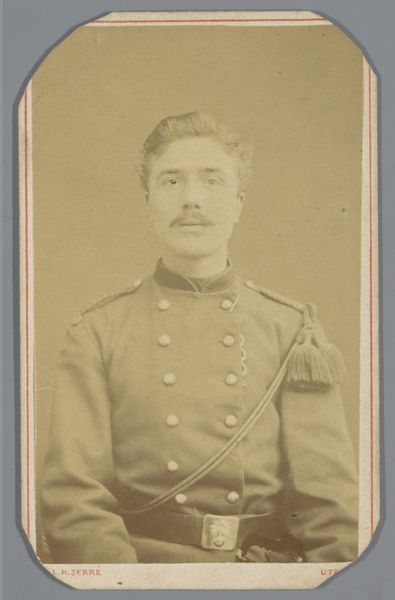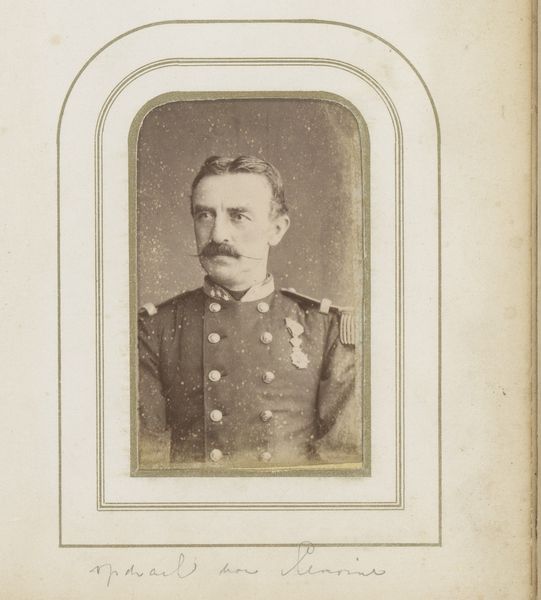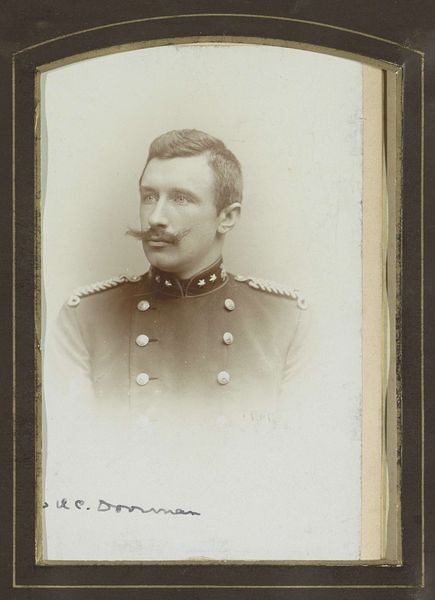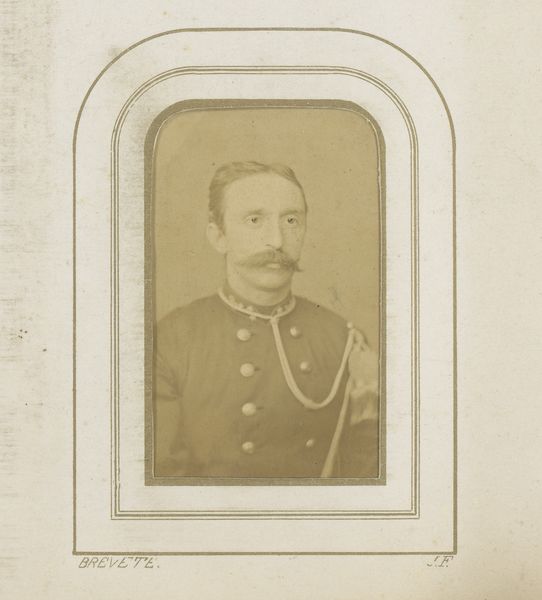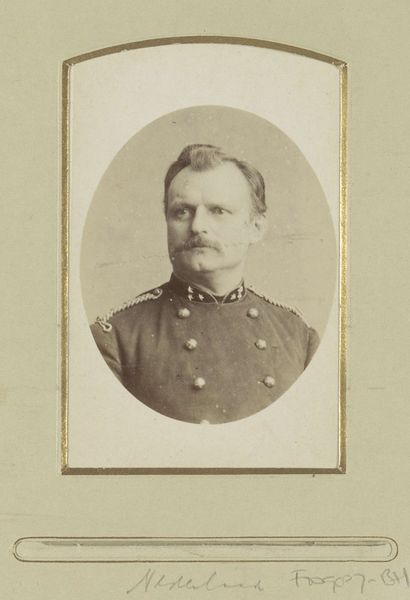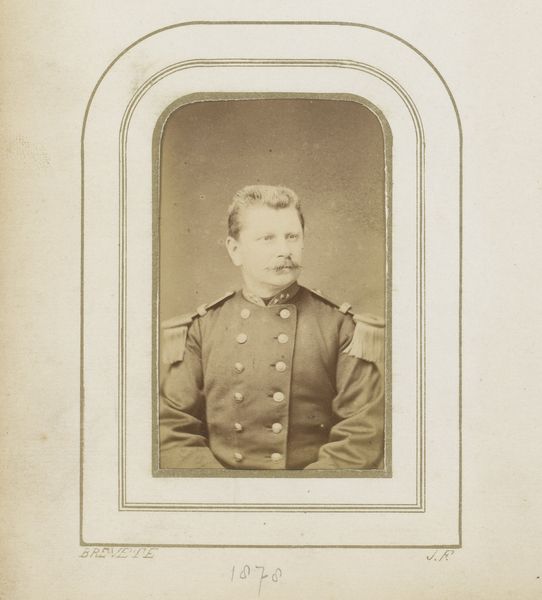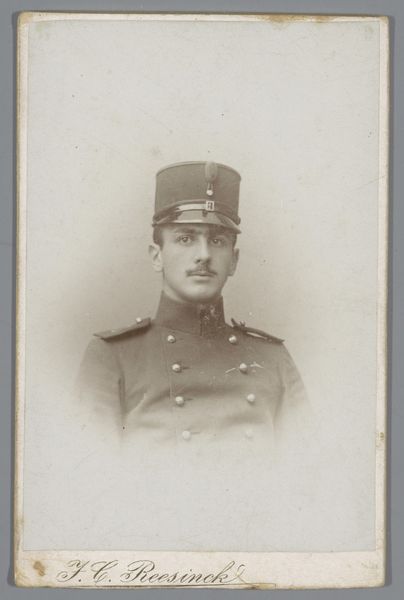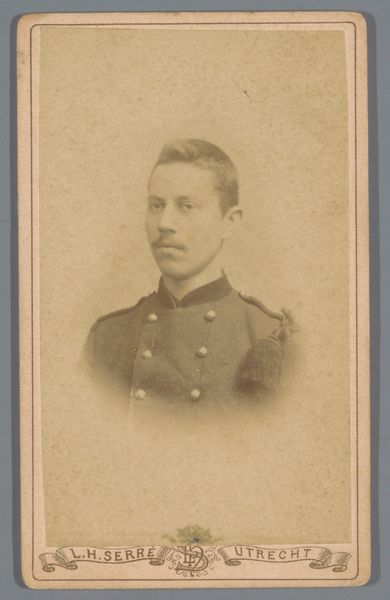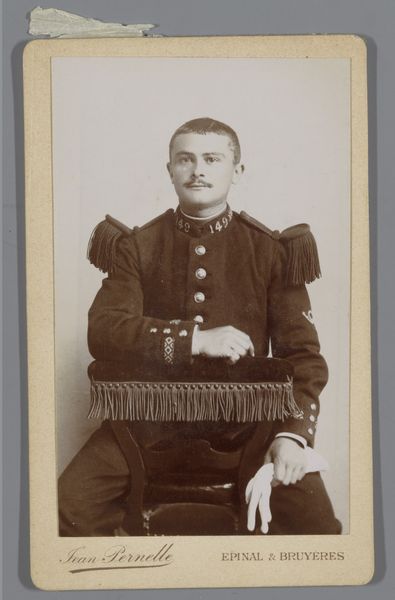
photography, gelatin-silver-print
#
photography
#
gelatin-silver-print
#
history-painting
#
paper medium
#
realism
Dimensions: height 103 mm, width 64 mm
Copyright: Rijks Museum: Open Domain
Curator: Before us is an intriguing gelatin silver print, titled "Portret van een onbekende man in uniform" by Cornelis Bernardus Broersma, dated between 1892 and 1903. It resides here at the Rijksmuseum. Editor: It feels haunted. The soft focus and sepia tones lend such an air of melancholy. He’s leaning slightly, as if time itself is weighing him down. I want to write a short story about his missing letters. Curator: Interesting that you pick up on that melancholic quality. As a gelatin silver print, this piece marks a key moment in photography’s accessibility. We see photography becoming a readily available medium to the broader public during this period. Photography was getting very commercialized, so people from the lower classes could have their photographs taken more easily. Editor: The uniformity in itself says so much about belonging, duty… or maybe just societal expectations. Do you think this photo was about self-fashioning as much as record-keeping? I am drawn to the quiet performance of it all. Curator: Undeniably. The crispness of the uniform speaks to the era's growing consumer culture—ready-made clothes available at large department stores—and the staged backdrop points to photography's performative aspect. The photographer Broersma strategically crafted an aspirational and dignified self-image to meet market expectations. Editor: Thinking about that performance, it makes me wonder what the uncaptured moments looked like, you know? The ones with the slouch, the sigh, the whispered complaints about itchy wool and too much starch. Now that I think of it, maybe that melancholy that I first picked up on is nothing more than the boredom of someone posing too long. Curator: That speaks to your observation about "moments," the labour inherent to photographic practices—setting the stage, long exposures, chemicals—points to how photography was very much a calculated process rooted in real work. The question becomes: did photography give the sitters the desired agency they wished? Or was it still confined by technical and social restraints? Editor: I suppose every picture holds an untold story and unposed truth about someone trying to define his place. Food for thought… Curator: Precisely. The photograph makes the silent eloquence of materiality accessible to different perceptions of a fast-changing world.
Comments
No comments
Be the first to comment and join the conversation on the ultimate creative platform.
